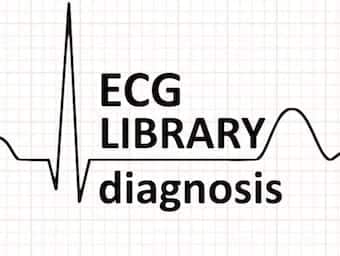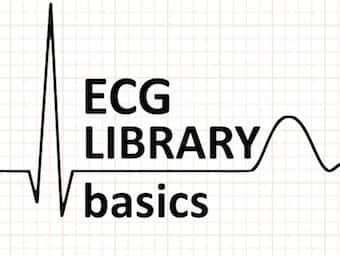
Accelerated Junctional Rhythm (AJR)
AJR occurs when the rate of an AV junctional pacemaker exceeds that of the sinus node. Seen in digoxin toxicity and myocarditis

AJR occurs when the rate of an AV junctional pacemaker exceeds that of the sinus node. Seen in digoxin toxicity and myocarditis

AIVR -- benign rhythm that occurs when rate of an ectopic ventricular pacemaker exceeds sinus node. Often seen in reperfusion phase following anterior STEMI

EKG differential diagnosis. Differentials based on specific ECG findings. Book: ECGs for the Emergency Physician 1 and 2; LITFL ECG Library

Assessment, interpretation of ECG Conduction Blocks including first-degree, second-degree, third-degree, fascicular blocks - ECG Library

Biatrial enlargement is diagnosed when criteria for both right and left atrial enlargement are present on the same ECG - EKG Library LITFL

Brief description of right atrial enlargement (P pulmonale) including ECG criteria for diagnosis and list of causes - EKG Library LITFL

Review of the EKG features of left atrial enlargement (LAE) aka Left atrial hypertrophy (LAH) - ECG Library LITFL. P mitrale

Narrow and broad/Wide QRS complex morphology Low/high voltage QRS, differential diagnosis, causes and spot diagnosis on LITFL ECG library

The J point is the the junction between the termination of the QRS complex and the beginning of the ST segment. EKG J-point

QT interval is the time from the start of the Q wave to the end of the T wave, time taken for ventricular depolarisation and repolarisation

ECG PR segment is the flat, usually isoelectric segment between end of the P wave and the start of the QRS complex.

Assessment / interpretation of the EKG PR interval. ECG PR interval is the time from the onset of the P wave to the start of the QRS complex.